Stealers, sophisticated programs designed to extract sensitive data from computer systems, pose a persistent threat in today's digital landscape.
Document verification and deepfake detection: key technologies against labour frauds

In the face of the persistent threat of various forms of labour fraud, identity verification solutions must be enhanced with deepfake detection options or focus on powerful document analysis.
Frauds in recruitment processes
U
nfortunately, the submission of fictitious or altered information by applicants during selection processes is a common practice that causes significant loss of time and money for companies.
This practice ranges from the falsification of language skills to the exaggeration of experiences abroad or participation in projects. Identifying this type of fraud is challenging when reviewing CVs or application records; however, it becomes evident during an interview or the early days of work when the candidate is confronted with the falsehood of their claims. For example, conducting a simple language competency test during the interview can reveal inconsistencies in the skills declared by the applicant.
On the other hand, document fraud involves the fabrication or use of falsified documents by the applicant. This can range from falsifying identifications to creating fake academic degrees or credentials. Unlike fraud in the application, in this case, the candidate attempts to support false information by presenting documents that supposedly corroborate their claims. In certain instances, this type of fraud may even involve identity theft.
In this context, document verification technologies play a crucial role in preventing fraud during the recruitment process of new employees. Let’s examine some of the contributions of these solutions:
- Identity validation: They allow employers to validate the identity of candidates by verifying documents such as passports, driving licenses, or other forms of identification. This helps ensure that candidates are who they claim to be and are not using false identities to access job opportunities.
- Educational and employment background verification: One of the most interesting functions of these solutions is to analyze the information provided by candidates about their educational and employment history. By verifying academic degrees, certificates, and previous work experiences, companies can ensure that candidates have the credentials and experience they claim to have.
- Detection of forgeries: Alterations in dates, names, or seals are some of the signs that document verification technologies can detect, using sophisticated algorithms and recognition techniques. Identifying these irregularities reduces the chances of fake documents passing all filters and the wrong person ending up joining the company.
- Security and compliance: The implementation of these solutions not only protects organizations against fraud but also helps ensure compliance with regulations and legal standards. By verifying the authenticity of employees’ documents, companies minimize the risk of hiring individuals who do not meet labor eligibility requirements.
- Time and resource savings: Of course, this is one of the factors to consider. By automating the document verification process, companies can save time and resources that would otherwise be used in manual document review. Document verification technologies streamline the recruitment process by providing fast and accurate results, allowing employers to make informed hiring decisions more efficiently and dedicate their time to high-value tasks.
Deepfakes: a new threat in personnel selection Processes
Deepfakes, manipulated videos or audios using artificial intelligence to make a person appear to say or do something they never did, have emerged as a new threat in recruitment processes. While this technology has the potential for positive uses, such as creating educational or entertainment content, in the wrong hands, it can be used for fraud and deceive companies.
How are deepfakes used in recruitment?
Deepfakes threaten the normal functioning of the crypto market, creating scams that use the image of celebrities, they are used to manipulate electoral processes and also in corporate environments. Among their applications are:
- Identity theft: By overlaying the image and voice of a real person onto another person’s, the scammer can impersonate a qualified candidate during a video interview.
- Skills falsification: A candidate can create a deepfake showing them performing tasks or skills they do not possess, such as speaking a language fluently or programming complex code.
- Reputation manipulation: Unfair competition can leverage deepfakes, making a real candidate say negative things about the company or its products, with the aim of damaging its reputation and chances of getting the job
- CEO fraud: Deepfakes have introduced a new dimension to CEO fraud, allowing scammers to create fake videos or audios where a real executive appears to give instructions or make requests (such as transferring large sums of money) that seem legitimate but are actually fraudulent.
How can companies protect themselves from deepfakes?
While detecting deepfakes can be difficult, there are some measures companies can take to protect themselves from this type of fraud:
Identity verification: It is important to verify the identity of candidates before conducting a video call. It may seem obvious, but filters are still lax, which directly affects the robustness of recruitment processes. Identity verification protocols tailored to the needs and size of each company, taking into account biometrics or multifactor approaches, can ensure greater security and confidence in the selection process, reducing the risk of fraud and ensuring the integrity of candidates’ information and personal data. Contact our identity verification experts now and request personalised advice.
- Behaviour analysis: During video calls, it is important to observe the candidate’s behaviour, such as the consistency between their verbal and non-verbal responses, their body language, and their level of knowledge on the subject.
- Utilisation of deepfake detection software: Technology is once again on our side. Having identity verification solutions with advanced deepfake detection options, such as TrustCloud, will prevent malicious actors from achieving their goals through the use of these techniques.
- Conducting follow-up tests: After a video call, it is advisable to conduct follow-up tests that allow for a more accurate assessment of the candidate’s skills and knowledge.
- Establishment of clear policies: The company must have clear policies on the use of video calls in the recruitment process, including measures to be taken in case of fraud.
Combining effective document verification technologies with specific measures to detect and prevent fraud, such as identity verification and behavioural analysis, is essential to ensure security and confidence in the personnel selection process. By adopting a proactive approach and using appropriate tools and policies, companies can protect themselves against labour frauds and ensure the hiring of suitable and honest candidates, always safeguarding the company’s reputation.
TrustCloud designs the best identity verification strategy for your company.
Contact our experts today for free advice



























This Post Has 0 Comments